Jill Kennare: The first Aussie to score back-to-back ODI centuries
South Australian Sport Hall of Fame inductee Jill Kennare beat cricket legend Allan Border by two weeks to be the first Australian to score two centuries in consecutive innings. It’s just one of many records the pioneering sportswoman can claim.

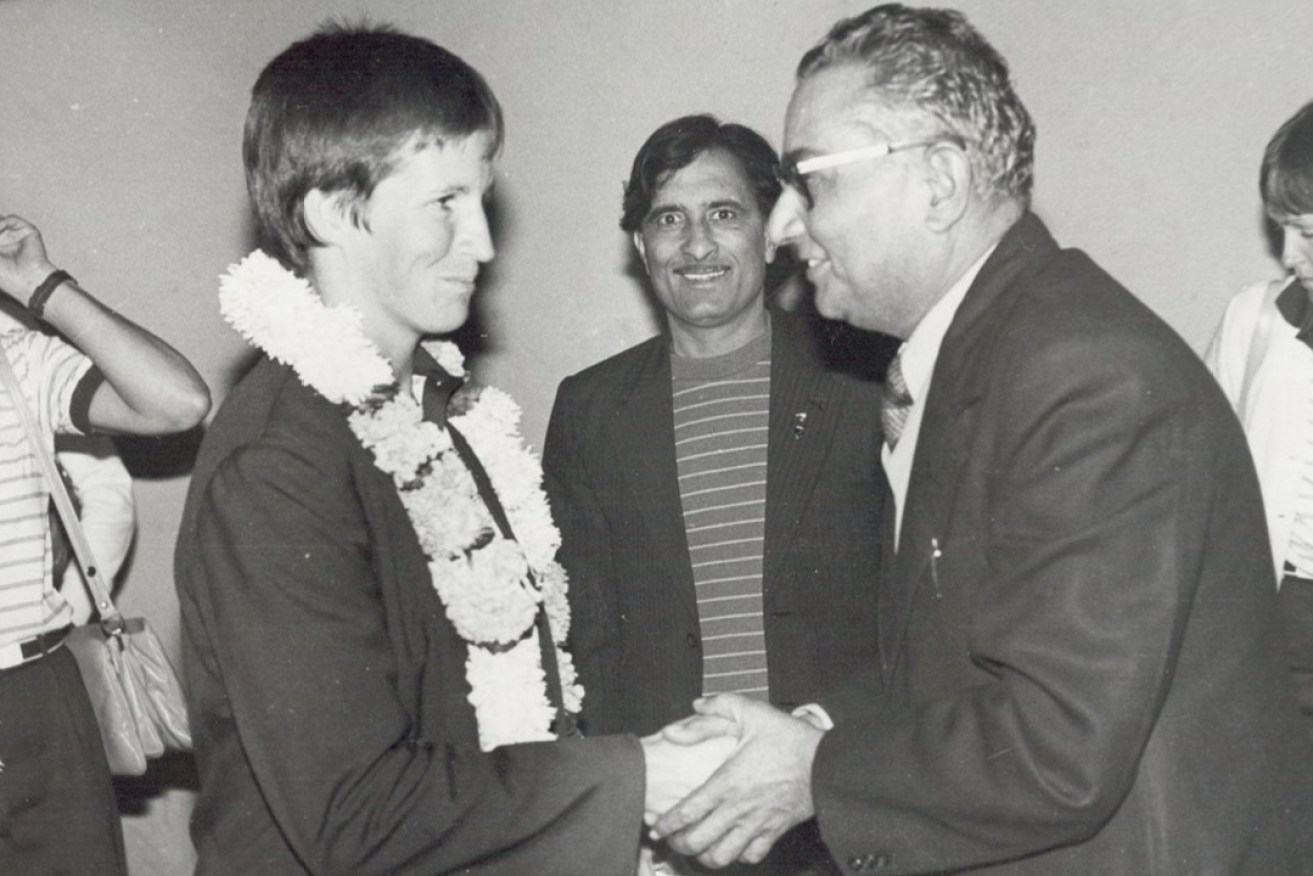
Former Australian captain Jill Kennare being welcomed on arrival in Delhi in 1984. Photo: Supplied.
These days, you’ll likely find Jill Kennare swinging a golf club rather than a cricket bat, spending her daylight hours on the verdant Grange Golf Club greens or on the balcony overlooking the course.
In the mornings, she’ll take her cocker spaniel Billy out for a walk on the beach – routine at this point for the former captain of the women’s Australian Test side who was born at Glenelg in 1956. She’s lived near Adelaide’s coastline ever since.
This year, Jill will add another trophy to her cabinet which is already stacked with accolades: she is an Honorary Life Member at Lords, her name is on the WACA ground Test honour boards, and she was in the Guinness Book of World Records too.
Jill, who also represented Australia in lacrosse, will be inducted into the South Australian Sport Hall of Fame on Friday, joining fellow legends of the sport like Karen Rolton and Lyn “Lefty” Fullston.
Speaking to InDaily, she said it was an “amazing honour to have my name put up there with all those people who I’ve seen as sporting legends and heroes”.
“I’m hoping that it will help promote the participation of girls in sport more generally, but particularly non-traditional sports like cricket.”
Jill went to school at St Aloysius College “where sport was very difficult” due to being in the centre of the CBD. She said she first picked up cricket while studying to become a phys ed teacher. At the time, she “didn’t know women played”, but Wendy Piltz encouraged her to join the side.
She would be working a full-time job and training on top of that.
“It was pretty hard, we put in really long hours. You’d be eating really late, or you’d eat dinner and then go out and train. It was quite an odd life, and it made working a bit more difficult so you really had to be efficient,” she said.
“But I always loved cricket. My only early experience would have been with those really hard cork balls that shatter your shins – so you had to learn to use your bat. If you didn’t, you’d get punished.”
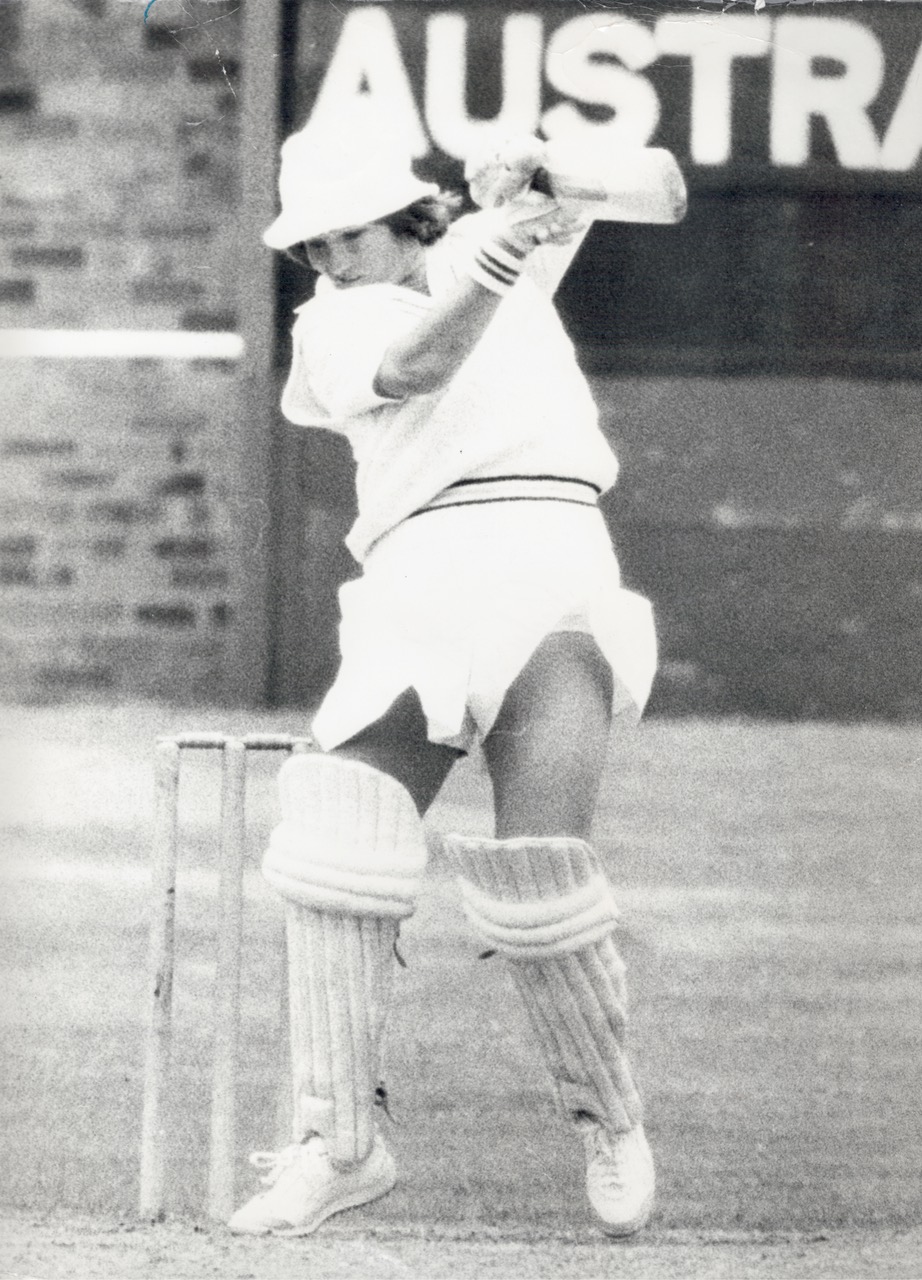
Jill Kennare preferred offside shots, as growing up the kitchen window was on her legside in her parents’ driveway. Photo: Supplied.
She said female players at the time were driven by “intrinsic motivation”. With no pay involved “there’s no reason to do it other than the love of the game, and it was a sport I really loved”.
“But to actually play a game – that was exciting. I guess I found out pretty quickly that I was reasonably good at it, so I started to take it more seriously,” she said.
From club level, Jill worked her way up the ranks to play for the South Australian side, and eventually the Australian international team.
She said her first game for SA was in Wellington, New South Wales.
“Airfares and stuff: my parents had to pay that,” Kennare said, noting she was able to “put my stamp on the game” at that match.
“I just kept learning more and more. It just became so exciting – I couldn’t get enough of it.”
This made training “fun” for Kennare who was working full-time while playing for the South Australian side.
“I just loved to train. Some of the players today, they get sick of it because there’s just too much training and they train all day, whereas we just didn’t with a full-time job, we just couldn’t get enough.
“In those days, the batters got exactly the same amount of time as the bowlers in the nets – everyone got the same 10 minutes, even though I could’ve batted all day.
“I would’ve been a Steve Smith I think.”
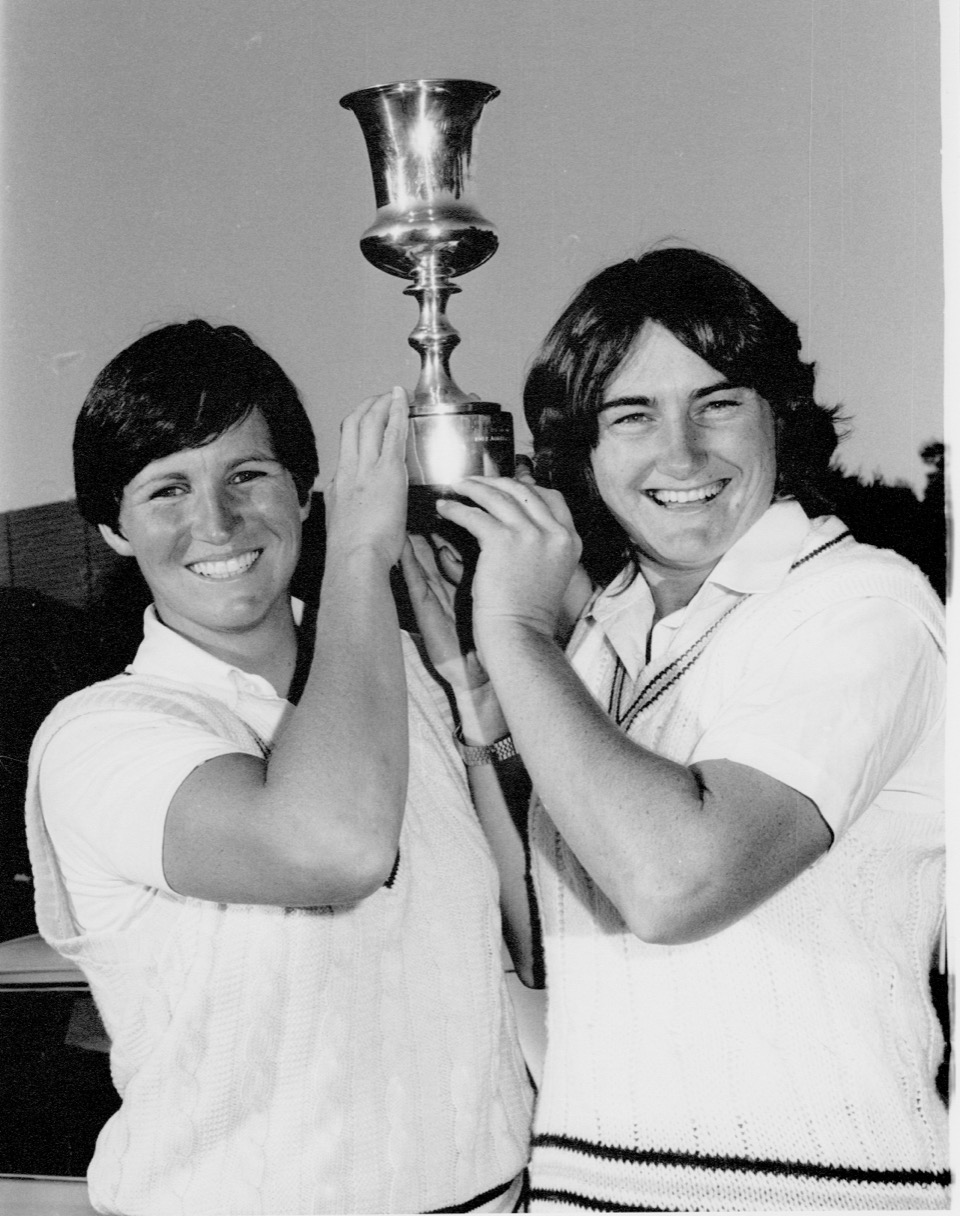
Lyn Fullston and Jill Kennare with the ODI World Cup 1982. Photo: Supplied.
Jill was a self-described “aggressive-style” player, with a preference for offside shots. She reckons her style of play would be better suited to the current format of cricket, which favours big swings and experimentation with batting over the “conservative” style of play of her day.
“What [Glenn] Maxwell does would have been totally unacceptable. You would’ve been disciplined for it,” she said.
“I had an aggressive style but it still had to be fairly conventional shots. Now, they’re always learning new shots and those people who do can be so much more successful.”
The more conservative style of the time was on full display when she captained the Australian Test side on the 1983/84 tour of India – the first-ever Test series for the two countries.
“[India was] very different to play against, because of their psyche and their approach to the game, which was much more conservative than us,” she said.
“For them, losing was to be avoided at all costs. A draw was okay. They were very conservative and I remember Lefty [Lyn Fullston] bowling 48 overs in one innings for 49 runs. They just were not prepared to really take the game on or take any risks.”
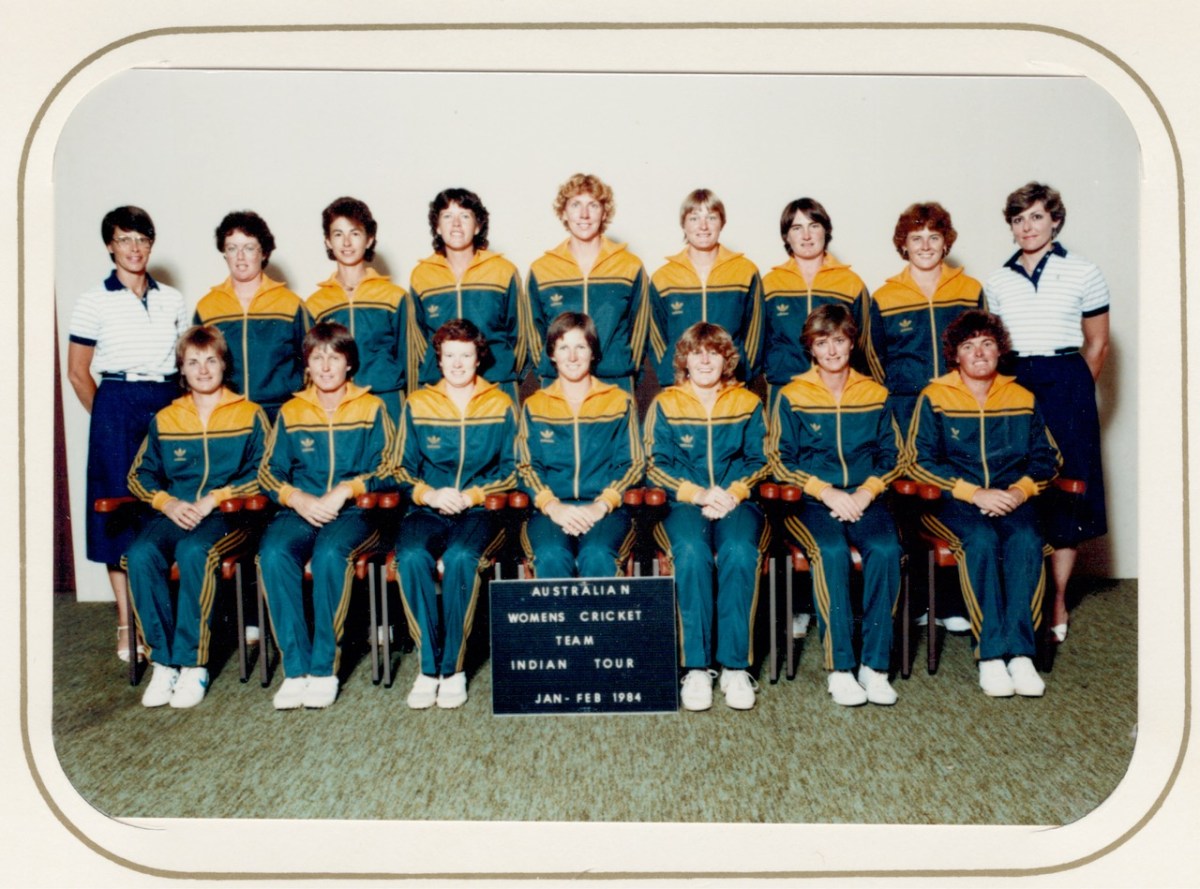
The 1984 Australian Womens Cricket Team, captained by Jill Kennare. Photo: Supplied.
During her cricket career, Jill created many records. For example, she was the first Australian (woman or man) to score two consecutive centuries for Australia. The two 100s were achieved on consecutive days, and both against an English side at Melbourne in ’85.
“I was the first Australian to do that and the first woman in the world. But not many people know because Allan Border did it two weeks later,” she said.
Also against England in ’85, Kennare and Denise Emerson hit a record partnership for Australia of 176 runs. This record was not beaten until 2001, when Belinda Clark and Joanne Broadbent scored 197 together against England.
Another highlight: hitting the winning run in the third and final match of the 1984-85 Women’s Ashes, which was Australia’s first series win against England since 1949.
“There are records that I held until recently that I didn’t even know about,” she said.
“During the recent test match in India an English friend sent me a congratulatory email informing me that I was still on top of the list for the number of centuries made for Australia in test matches. I had no idea!”
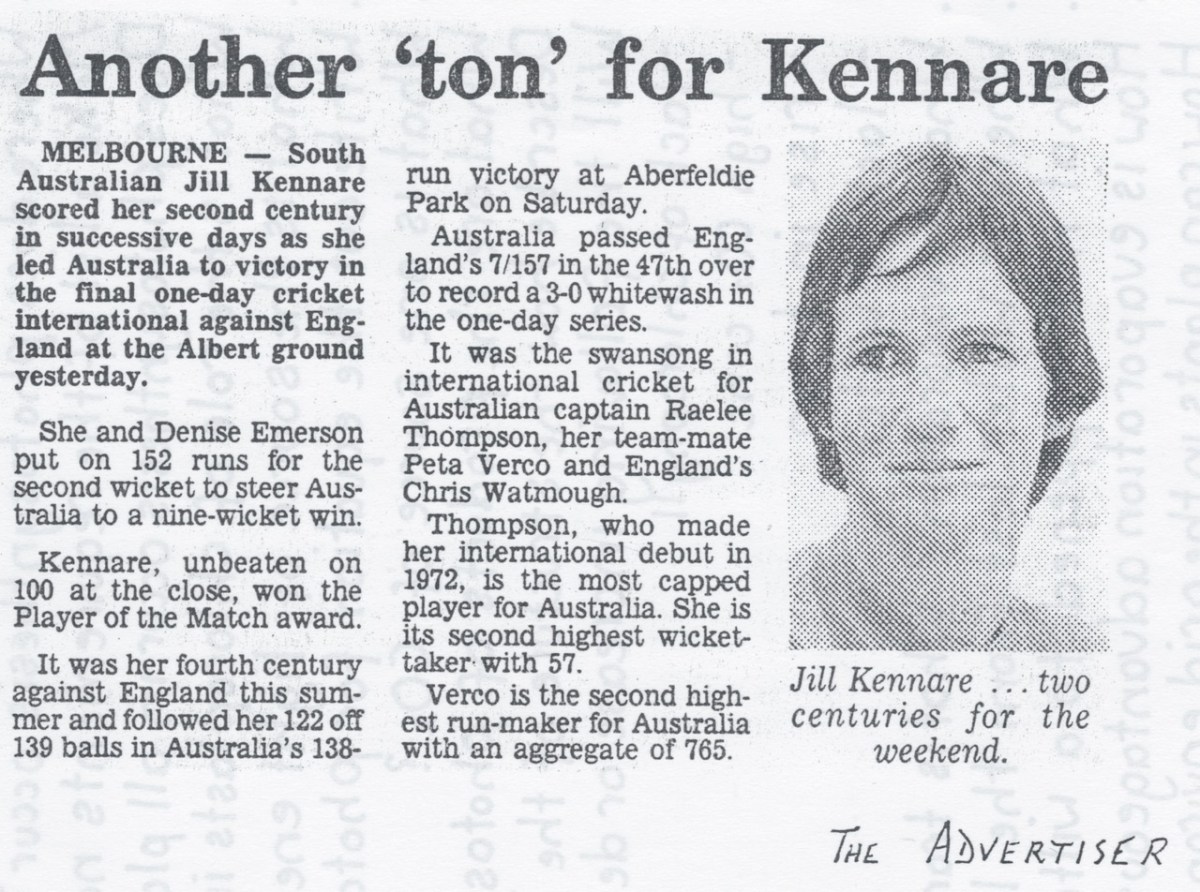
A scan of The Advertiser detailing Kennare’s double ton.
Jill Kennare has been previously suggested as an option to be the first statue of a female at Adelaide Oval.
InDaily asked her what she thought about the proposal.
“I think we need a woman, but probably not myself,” she said.
“But if you’re going to have some men, you should definitely strive to have equal representation. If we don’t have equal participation then you need to have equal role models. If you can’t see it, you can’t be it.”
The latest inductees to the South Australian Sport Hall of Fame will be announced at Adelaide Oval on March 1. For details and tickets, go here.
Read InDaily throughout February as we reveal this year’s inductees.




